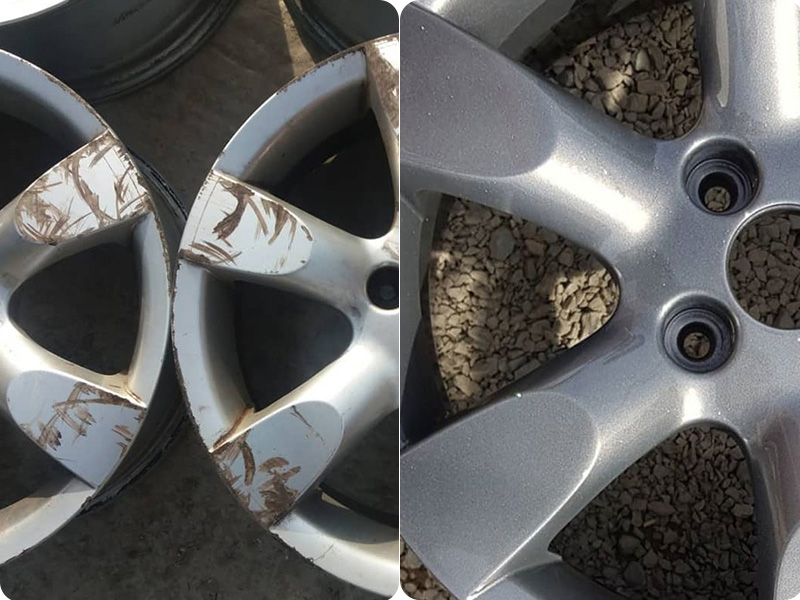Straightening a curved alloy wheel is much more complicated than just hitting an elbow with a hammer. Things that have worked for steel wheels are likely to damage the alloy wheels and cannot be repaired, so it is very important to take the curved alloy wheels to a workshop that really knows how to straighten the wheels. The straightening equipment used to correct large or small bends of wheels has been very complicated.
First, the tire must be removed from the wheel, because the curved alloy wheel cannot be accurately fixed to the tire. In addition, since it is necessary to use heat when repairing a curved wheel, putting it on the tire while it is straightened may damage the tire.
Next, the grinding wheel must be fixed on the equipment and rotated on it, and a gauge should be used to accurately display the bending position of the alloy grinding wheel. Indeed, for example, rotating a wheel on a balance machine can help you see whether the wheel is bent, but when the bending of an aluminum alloy wheel needs to be properly repaired, a gauge is a necessary tool to check each bending position. Located (most curved wheels have more than one bend).
After the wheel is rotated by the gauge and the positions of all the elbows are marked, the bent wheel can be straightened. The first wheel straightening machine equipped with bent wheels was used to remove the larger bends. After fixing the wheel to the machine, heat is applied to the curved area of the wheel. Depending on the manufacturer of the wheel and the type of alloy used, we usually heat the wheel to between 250 and 350 degrees. When the wheels are hot enough, the curve is massaged away. In some cases, this may need to be tried, because aluminum wheels have "memory" and sometimes you want to return to their starting point. It is very important to use a gauge here, because when the curved wheel is straightened, there must be an indicator to indicate "round"-you can't just press in the curved wheel until it looks round (because it may not be round).
After eliminating all major elbows, the wheel can run normally, with only very slight elbows around the rim. This is when connecting the wheel to the second straightener, where the high-power torque motor rolls the wheel onto the "former" to reshape the wheel. This process will change the time, but will eventually eliminate any slight bending on the wheel, so the wheel will run within a hundredth of an inch. All wheels can have a certain amount of change (usually one hundredth of an inch), but when straightening a curved aluminum alloy wheel, the last necessary step is to have a good balancer. By using a balancing machine (after reinstalling the tires), weights can be used to correct the final deviation.
A final straightening machine (used only when necessary) can help us to bend the wheel sideways-or when the edges of the wheel bend inwards or outwards. By using this combination of straightening machines, we can mix the so-called semi-scientific and semi-art forms, which allows us to straighten most of the curved alloy wheels.
You also could repair wheel surface by Taian Crystal (crystalwheelrepair.com) diamond cut wheel repair machine CNC. Alloy wheel is put on a lathe and part of or the entire painted surface of the wheel machined off to leave a shiny alloy finish. A small part of the actual alloy is machined off to create this finish. The machine can be applied to the full face and lip of the wheel. The surface layer of the wheel is cut and removed from the wheel, revealing the natural aluminium shine and the lines from the CNC lathe.






